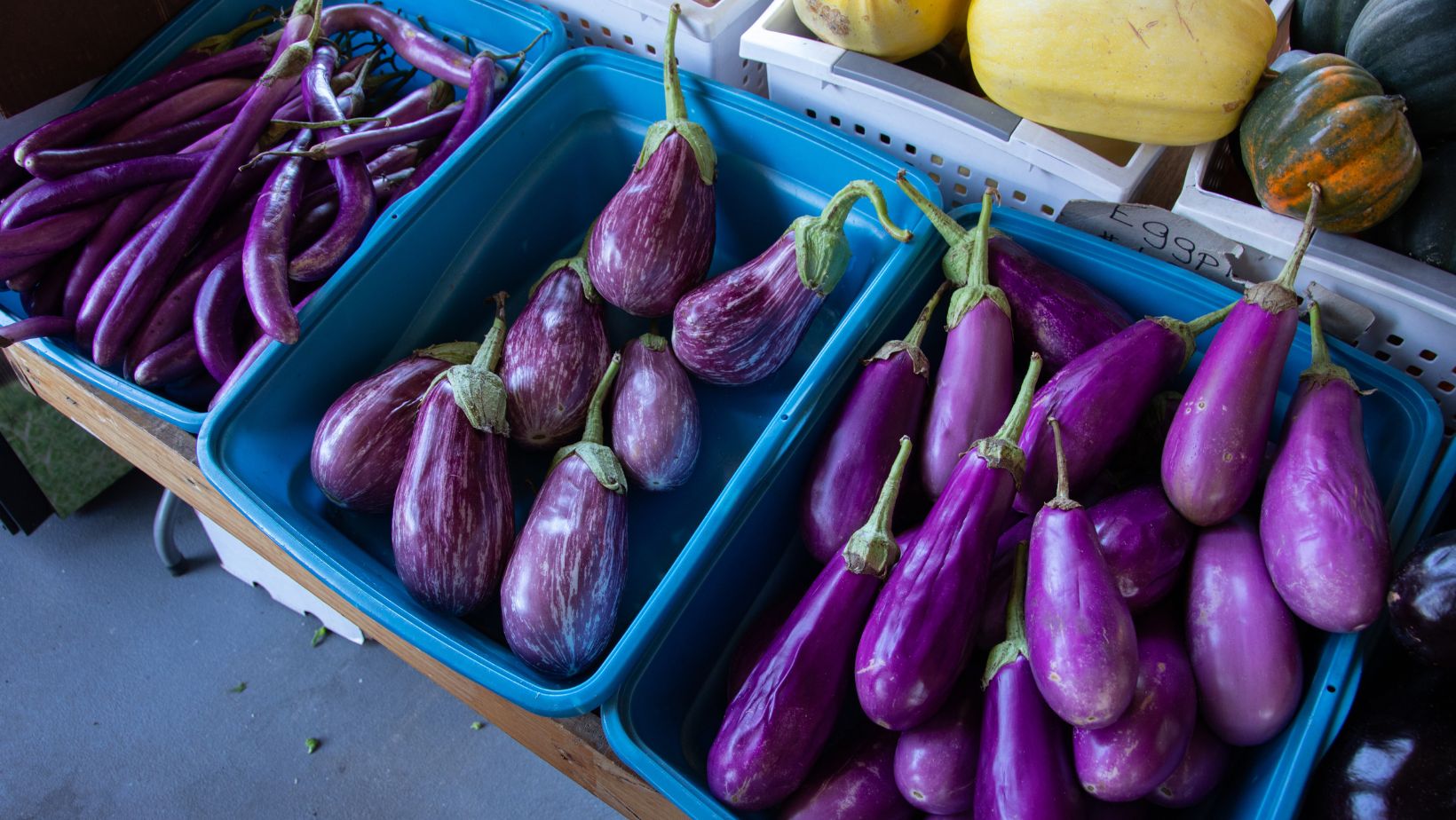What should the inside of an eggplant look like? |

We may all think we know what the inside of an eggplant looks like, but have you ever taken the time to truly analyze its innards? Let’s take a journey deeper into this mysterious fruit and see what surprises await!
What does a ripe eggplant look like on the inside?
It’s important to be familiar with what a ripe eggplant should look like on the inside so you can make sure you get the best-tasting dish. Generally, when you cut into an eggplant, it should have white, pale yellow, or pinkish flesh that is soft but not mushy. The perfect eggplant should also have a fresh smell, and the skin should still be glossy and firm. Eggplants are typically at their best right away, so make sure to use them as soon as possible after purchasing them.
If an eggplant has brown patches or a slimy texture on its flesh, it’s past its prime — and certainly not in condition for eating! If any part of the inside of the fruit is discolored or looks like it no longer retains its firmness, discard that piece of eggplant — it won’t taste good. Make sure to inspect your eggplants closely before buying them in order to get the freshest produce possible for your dish!
How can you tell if an eggplant is bad?
When it comes to eggplants, the outside of the vegetable can sometimes be deceiving. While a glossy, smooth exterior may indicate that an eggplant is fresh, taking a look at the inside can provide a more definitive answer. In order to evaluate if an eggplant is still good for cooking or has begun to deteriorate, there are some characteristics to look for.
When you cut into the eggplant, pay attention to whether or not it is dry and crumbly on the inside with discoloration, which indicates that it is past its prime and no longer suited for consumption. The interior should have solid white color without a trace of dark browning or blackening along with no traces of liquid or moisture throughout. Additionally, smell can be helpful in determining if an eggplant is bad; a sour smell typically implies spoilage, while freshness will smell slightly sweet.
Because freshness is key when using an eggplant in recipes and dishes, proper storage methods are essential in preserving its quality. An unrefrigerated and uncut eggplant can last up to one week when stored in a cool dry place like a kitchen countertop or pantry shelf. Once cut open however, any uneaten portions should be sealed and stored in an airtight container within two days of being cut so as not to spoil too quickly due to oxidation from air exposure.
Why is eggplant harmful to your health?
Eggplant may not appear to be as harmful to your health as other common vegetables, but it is important to remember that all produce must be consumed in moderation and prepared properly. Eggplants contain a toxin called solanine, which can cause abdominal cramping and headaches if eaten in large quantities. The toxin is concentrated mainly in the leaves, stems, and cap of the eggplant and can lead to vomiting and diarrhea when ingested.
When buying an eggplant, it is important to give it a thorough inspection. The exterior should be firm with no blemishes or discoloration, while the inside should be a creamy white color without any dark flecks or brown spots. If you encounter any browning or discolored spots on the outside, these could be signs of overheating or rotting that have caused an increase in solanine levels. Discard any eggplants with such signs of spoilage.
When an eggplant is ready to pluck, how do you know?
An eggplant is ready to harvest when it has reached a good size and the skin has become hard and glossy, giving it a nearly impermeable appearance. The flesh should be firm, with a pale-colored interior (not yellow or brown). To test its readiness, insert the tip of your thumb into the side of the fruit where the stem was attached; if it resists just slightly, then it’s ready. If the flesh yields easily and feels spongy or slippery to the touch, then it’s not quite ripe yet.
When is the best time to eat eggplant?
Eggplant is an incredibly versatile vegetable that can be eaten at any stage of ripeness. When picking the perfect eggplant, look for a few key characteristics. The outside should be smooth and unblemished, with shiny, deep purple skin. It should feel firm yet slightly spongy when you press against it. When you cut into the eggplant, it should have a creamy white-to-pale yellow flesh with no browning or spots.
The best time to eat an eggplant is when it is in peak season which generally goes from late summer to early fall. Eggplants will also taste best if they are cooked soon after being harvested. Consider roasting, sautéing or grilling the eggplant to really bring out its flavor! You can also turn it into dips or pair it with other ingredients to make hearty meals like lasagna or ratatouille.





